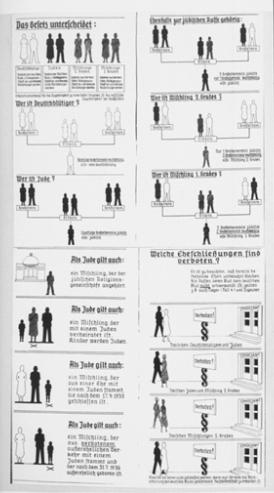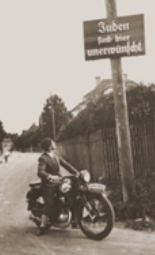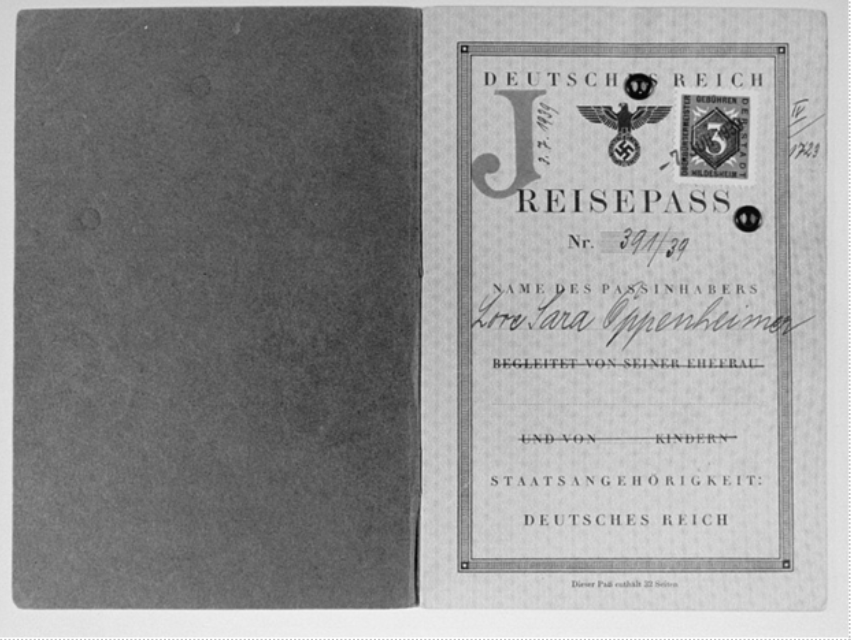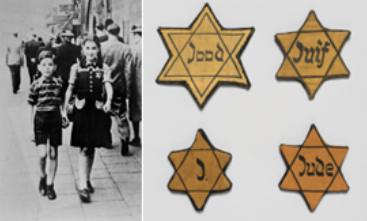Prior to Hitler taking power, there were already moves being taken to weaken the Jews living in Germany. They were under the constant threat of violence. Calls for boycotts of Jewish businesses were common as it was believed that Jews were taking business away from true Germans. Once Hitler became dictator, more than 400 laws and decrees were handed down not only from the national government, but from states, municipalities, and towns that would strip Jews of their rights and property18. Let’s look at a rough timeline of how the laws were enacted in pre-war Germany. I’ve also photocopied some of the specific decrees from a law book that I’ll be sharing with you all separately.
The first round of legislation came in 1933. They mainly focused on limiting Jewish participation in German public life. The first major law to strip rights away from Jewish citizens was the “Law for the Restoration of the Professional Civil Service of April 7, 1933” which outlined that “Jewish and "politically unreliable" civil servants and employees were to be excluded from state service”19. April of 1933 was the restriction of admissions of Jewish students to schools and universities in Germany. This was very quickly followed by limitations on “Jewish activity” in medicine and law. Jewish doctors would no longer receive payments from public insurance funds, the mayor of Munich would outlaw Jewish doctors from treating non-Jewish citizens, and the Bavarian Interior Ministry stopped admitting Jewish students to medical school. Berlin would forbid Jewish notaries and lawyers from practicing law. Nationally, licenses of Jewish tax consultants were revoked and a 1.5% quota was set for “non-Aryans” to be admitted to public schools and universities. Jewish civilian workers were fired from the German military and “in early 1934, forbade Jewish actors to perform on the stage or screen”20. Saxony would set forth a law that prevented Jews from ritually preparing and slaughtering animals, essentially preventing them from following kosher dietary restrictions.
1935 would see the enactment of the Nuremberg Laws. These laws institutionalized many of the prevalent Nazi ideologies regarding race. German Jews were stripped of their citizenship and were “prohibited them from marrying or having sexual relations with persons of ‘German or German-related blood’”21. These laws rid Jews of any political rights. They could no longer vote or hold any form of public office.
The Nuremberg Laws did not equate Jewishness by religion, but rather ancestry and race. The Holocaust Encyclopedia states that “the first amendment to the Nuremberg Laws defined anyone who had three or four Jewish grandparents as a Jew, regardless of whether that individual recognized himself or herself as a Jew or belonged to the Jewish religious community”22. This meant that non-practicing Germans and even Jews that had converted to Christianity were still considered Jewish.

Nuremberg Laws also enforced an immediate segregation, disallowing Jewish patients from being admitted to hospitals, preventing German judges from citing legal writings from Jewish authors, the final expulsion of Jewish officers from the military, and the deterrence of Jewish university students from sitting for doctoral exams. In December of 1935, it was decreed that Jewish soldiers were not to be named among the dead in WWI memorials.
From April 1933-April 1938, Germany took on the process of “Aryanization,” or, the process of fully excluding Jews from earning a living in the German economy. Jews were required to register all property and assets, leading to the expropriation of their material belongings. Jewish workers, managers, and business owners were dismissed, with their companies bought by non-Jews at a cheap price.
1936 saw a halt in the anti-Jewish activities as a result of the upcoming Winter and Summer Olympics. Segregation was toned down as Hitler did not want the possible criticism to sway the decision to hold the Olympics in Germany. This “would have been a serious blow to German prestige” and would likely “discourage international tourism and the revenue that it would bring during the Olympics year.”23
The antisemitic legislature would once again ramp up in 1937 and 1938. It was now nationally illegal for Jewish doctors to treat non-Jews and Jewish lawyers were stripped of their rights to practice law. After the events of Kristallnacht (we’ll discuss this later), Nazis doubled-down on Aryanization. Jews were banned from all public schools and universities, theaters, sports arenas, and movie theaters. Jews were no longer allowed in “Aryan” zones.

The government now required Jewish people to identify themselves in permanent, public ways to separate themselves from the surrounding communities. August of 1938 saw a German decree “that by January 1, 1939, Jewish men and women bearing first names of ‘non-Jewish’ origin had to add ‘Israel’ and ‘Sara,’ respectively, to their given names”24. Jews now had to carry identification cards and had their passports stamped with a “J”.

After the start of WWII, German authorities began to establish ghettos in order to truly separate Jews from the rest of the surrounding towns and cities. Ghettos date back to 1516 in Venice Italy, where a Jewish quarter was created. More ghettos popped up in the 16th and 17th century as Jews became more dispersed throughout Europe.
After the war started, The SS (a German paramilitary group) and other German authorities began to forcibly move Jews to isolated areas. There were three types of ghettos. Closed ghettos, closed off with walls, fences, or barbed wire; open ghettos, with no barriers but rigid restrictions on leaving and entering; and, destruction ghettos, these tightly controlled and only existed for 2-6 weeks before those living in them were shot and killed or deported to a concentration camp. The first ghetto was established in German-occupied Piotrków Trybunalski, Poland in October of 1939. The largest ghetto was in Warsaw, Poland, with more than 400,000 Jews crammed into 1.3 square miles. There were at least 1,143 ghettos established through German-occupied territories in Eastern Europe.



In the ghettos, Jews had to wear identifying badges or armbands. They were also forced to carry out hard labor in factories and plants that produced goods for the German war effort. There were also Nazi-appointed councils (Judenraete) that watched over Jewish life within the ghettos. Ghetto police enforced ordinances and decrees handed down by German authorities. Jewish police officers and council members were under the constant watch of German authorities and acted under their order as a means of survival. German authorities did not hesitate to kill them if they even seemed likely to not carry out orders. Organizing Jews into ghettos was just a part in the horrible chain of events. Truly, those living in ghettos were simplifying lying in wait while the higher ups in Berlin decided how to finally remove the Jewish population. This brings us to the final part, perhaps most recognizable portion of the Holocaust: The Final Solution.